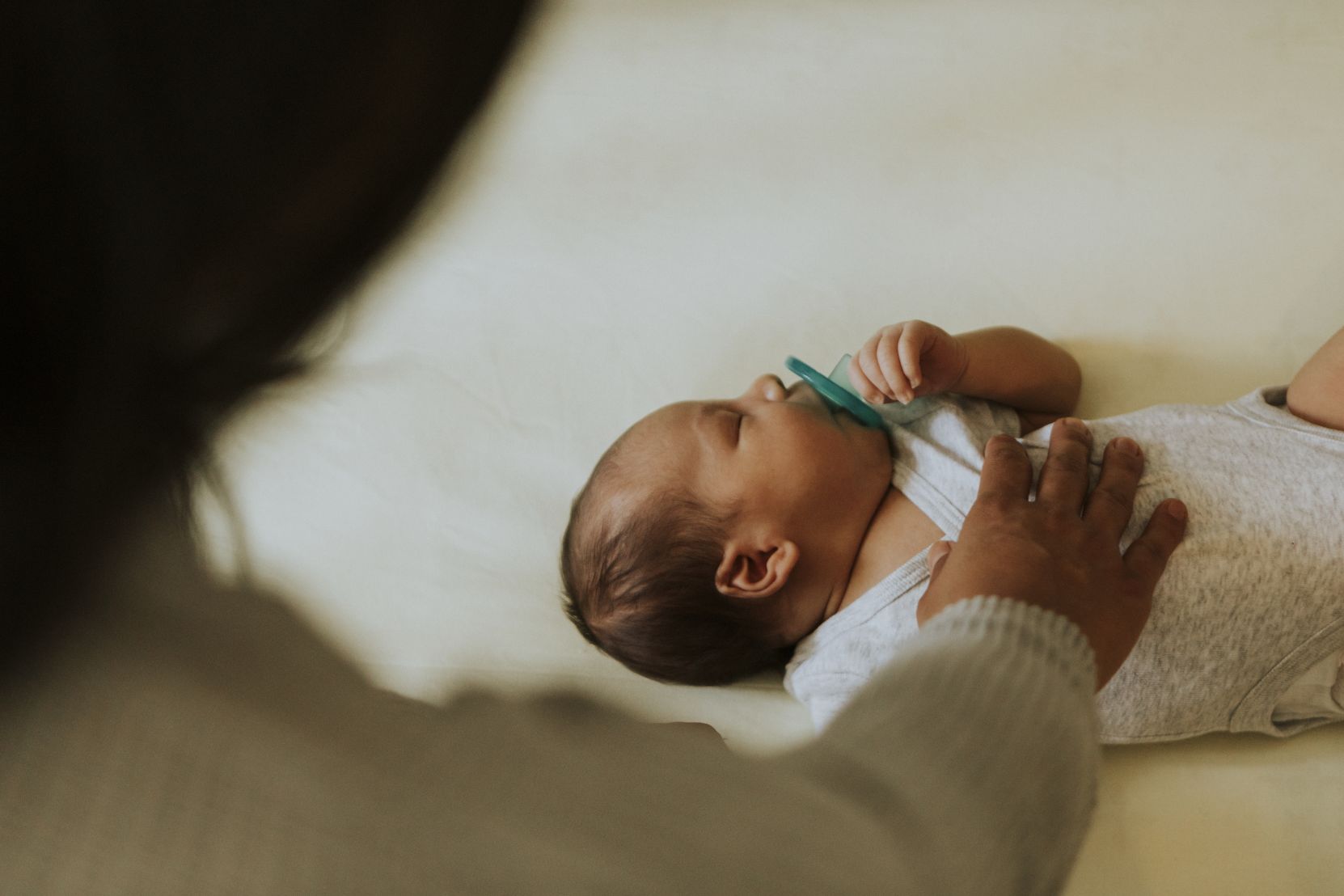Safe sleep for newborns and older babies is a big topic for new and expecting parents, and everyone from your healthcare providers to your next door neighbour will likely share information and stories with you. The idea of something happening to your little one while they sleep is a worrying thought, but luckily, there is a lot of evidence-based guidance available to help minimise the risk of SIDS and SUDI. This includes setting up a safe sleep space, positioning your baby on their back, and dressing your baby safely for sleep.
Create a safe space
You’ll need to set up a sturdy cot with a snug mattress and tightly fitted sheet, which meets current Australian standards. There should be no other items in the cot when your little one is sleeping; pillows, toys, or loose blankets or sheets can all be potential hazards. The temperature should be cool to help prevent overheating - around 18-22°C is generally recommended.
Red Nose Australia recommends sharing a room with your little one for the first 6-12 months of their life. Sharing a room has a protective effect to reduce the incidence of SUDI, as your breathing and general noise helps regulate your baby's sleep-wake arousal. As an extra bonus, this can make it easier to respond to your baby throughout the night.
Place your baby on their back
Red Nose Australia also recommends babies are put to sleep on their backs. Being on their backs helps protect their airways as they sleep. Once your little one is able to roll from their back to their tummy, it's OK to allow them to do that - but it's recommended to always put them down on their back.
Dress baby safely
Dressing your little one appropriately for bed will help regulate their temperature, so try to choose sleepwear that keeps them warm without needing a blanket.
Because beanies and loose bedding are potential hazards, it's worth avoiding using them for sleep. Beanies could fall off and land next to the head, which could be dangerous. We also release heat through the head and face, so leaving your baby's head uncovered allows them to regulate their body temperature and helps prevent overheating, which is a risk factor for SIDS.
Onesies are a good option for night time, as the fabric won’t bunch up and you can be sure your little one’s core is covered.
Some parents choose to wrap or swaddle their baby overnight. If you're wrapping or swaddling your baby, ensure no cloth will cover the baby’s chin, face, or head. Wrap tightly enough that it will not unravel, but not too tight across their chest or hips. Use a lightweight cloth or muslin wrap and check that they can still stretch their legs once wrapped up.
The Red Nose Australia guidelines recommend not using any wraps or swaddles that restrict the arms as soon as your baby shows any early signs of learning to roll, during any time of the day or night. This usually happens at around 8 weeks old. Babies love to practice new skills at night, and you don't want their first successful roll to be while you are asleep and when they can't use their hands to move their head into safe positions.
Sleeping bags are helpful in similar ways to wrapping, but look for sleeping bags which don't restrict their legs and have neck and arm holes which are small enough to prevent the bag from riding up and covering or entangling them overnight.
Creating a safe sleep space can sometimes feel overwhelming, but if you break it down, soon it will be second-nature. If you're in doubt, it's a great idea to speak with a trusted medical professional for advice.



